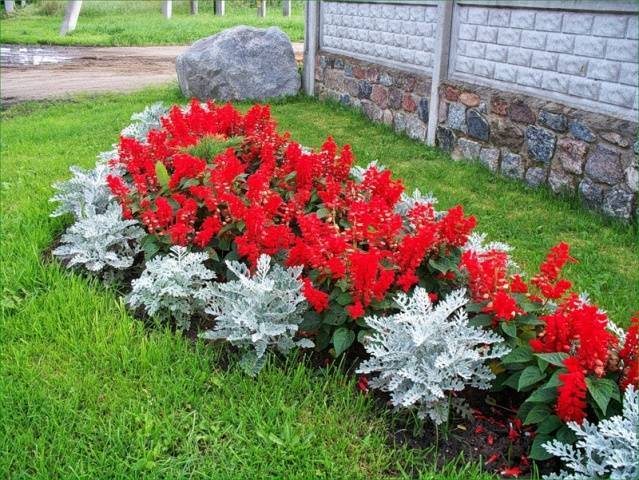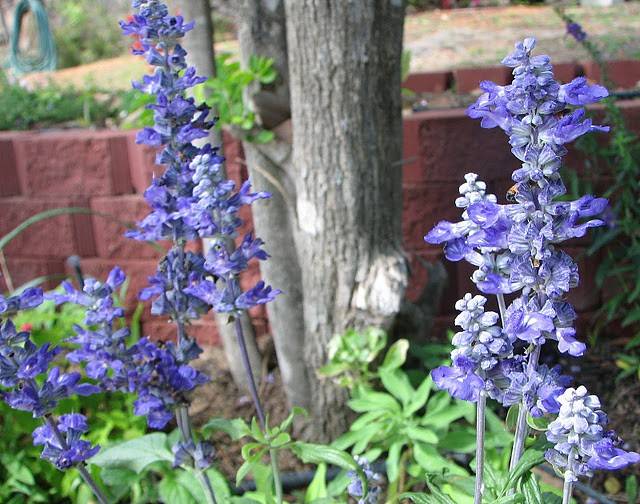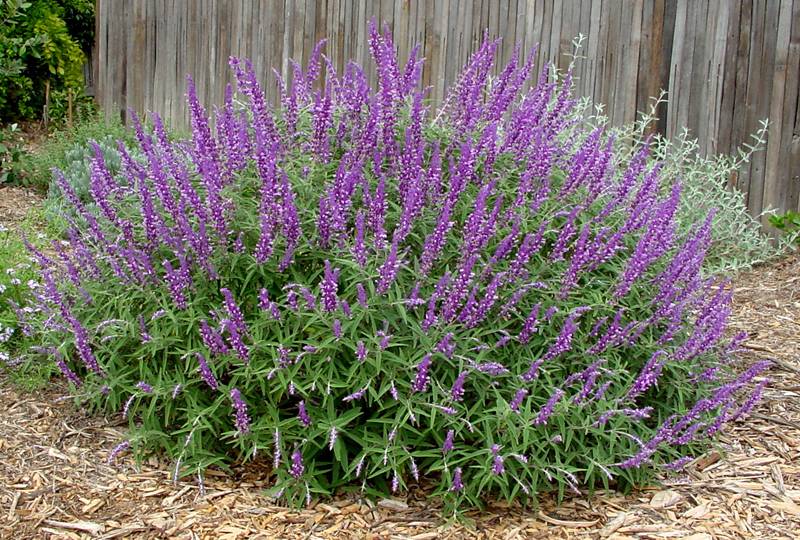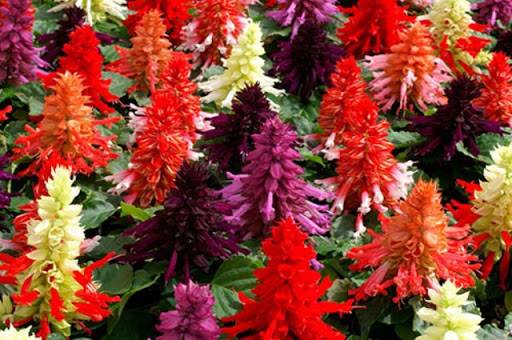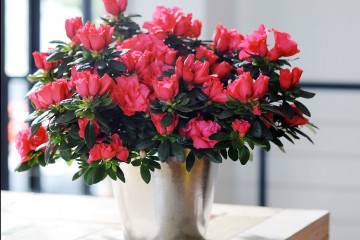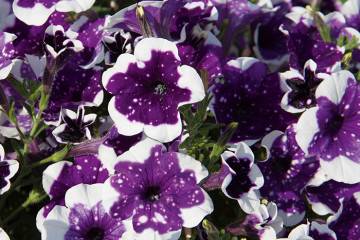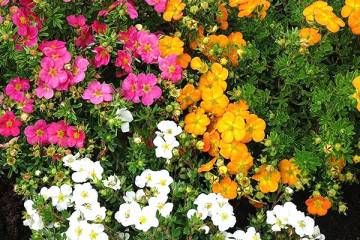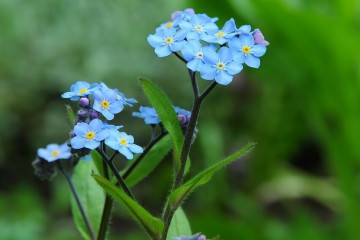Flowers salvia (salvia) or sage - characteristics of a perennial plant
Content:
The charming little sage shrub is famous not only for its medicinal properties, but it adorns the garden throughout the summer. Growing and caring for this crop does not require a lot of time and labor.
What does salvia look like, or sage
A bush with a powerful root system and beautiful inflorescences - that's what Salvia is. She has bright tassels with unusual tubular flowers, of which there are up to 90 pieces per inflorescence. The leaves are elongated at the top, they are opposite, smooth or fleecy.
What family does it belong to
Salvia belongs to the Yasnotkov family. There are over 900 sage species.
Briefly about the history of appearance
Sage is distributed throughout the globe. Due to its medicinal properties, people have known about it for thousands of years.
Plant characteristics
Description of sage:
- powerful developed root system;
- compact bushes;
- inflorescence at the end of each shoot;
- the traditional color is red.
In warm countries, salvia is grown as a perennial plant. In Central Russia, it is planted every year or every two years. In addition to red, sage blooms in different shades of lilac, blue, yellow, pink. Flowers are available in white, purple and purple.
Subtropical varieties
Sage, which grows in the subtropics, can grow in Russian flower beds for only one season. The plant does not tolerate the cold of winters and snow cover. The homeland of these species is Mexico. They deserve the love of gardeners for their simple care and ease of reproduction.
Salvia Divinorum
The rarest sage species. Under favorable conditions, sage stems stretch up to 2.5 m. At the top of the long stems there are pale white tassels.
Salvia sparkling, or brilliant (Salvia splendens)
The most common flower. The native color of the sparkling species is red. The rest of the variations are the work of the breeders. Salvia brilliant is loved by gardeners for the duration of flowering - from June to October. The bush grows well in flowerpots and tubs outdoors.
Salvia bright red (Salvia coccinea)
The name characterizes the color of the tassels-inflorescences. The peculiarity of this species is long inflorescences, up to 30 cm. They have two-lipped flowers 2-3 cm long. The color of the petals is dark scarlet.
Mealy salvia (Salvia farinacea)
This type of salvia is unique in that it has a white powdery bloom on its peduncles. The color of the whorls is white, blue or blue. The flowers are very small compared to other sage species.
Mediterranean species
Each type has its own peculiarity. The varieties are loved by gardeners for their unusual zest in the appearance of Mediterranean sage.
Salvia green, or variegated (Salvia viridis)
An amazing feature of this species is the brightly colored bracts. The bush is 60 cm high, the inflorescences are long, they have up to 6 flowers. Below the flowers are bright pink or purple bracts. Grown as an annual.
Salvia verticillata (Salvia verticillata)
Often this type of sage acts as a weed in garden and summer cottages. It is distributed practically throughout the Eurasian continent. The bush is low, the inflorescence is not particularly decorative, not high whorl, the leaves are fleecy, soft, light green.
Dandelion-leaved Salvia (Salvia taraxacifolia)
This unusual herb from Africa has a strong aroma, and the scent exudes all its green parts. The flowering is beautiful - the inflorescence is in the form of a whorl with large (up to 3 cm) pink petals interspersed. The flower shape is two-lipped, the pharynx is yellow. Long-lasting and spectacular flowering.
Salvia jurisicii
These short, dense bushes bloom purple-blue. Flowers are collected in 10 pieces. on low whorls. The flowers are small, up to 1 cm in length. The stems of the plant are densely covered with long hairs.
Frost-resistant varieties
The varieties that grow in Russia are able to withstand harsh winters.
Salvia oak, or forest (Salvia nemorosa, Salvia sylvestris)
In the wild, Russia grows in the Crimea and the Caucasus. The bush is high, up to 120 cm. The leaves are large, elliptical. The color of the inflorescences is varied.
Salvia glutinosa
This variety is classified as frost-resistant for its ability to withstand frosts down to −2 ° C. But this variety is grown as a biennial bush, sown in March-April. Small flowers are collected in small inflorescences. The highlight of this variety is bright and large bracts.
Lush Salvia (Salvia superba)
The bush is not high, but very dense. Inflorescences are collected in a neat spikelet, blooms for a long time, until mid-autumn. The buds of a wide variety of shades bloom.
How salvia reproduces
Annual and biennial species reproduce by seed. Perennial salvia can be propagated by seeds, by dividing a bush or by cuttings.
Growing from seeds
The most reliable way of sowing seeds is for seedlings. Frost-resistant varieties can be sown in autumn or early spring directly into the ground.
Time to board
Salvia blooms two months after sowing. Seeds for seedlings should be planted no later than February.
Choice of capacity
To maintain the same growth conditions, seeds are sown in one or more boxes. At the bottom it is necessary to cover a layer of expanded clay.
Soil and seed preparation
The soil needs light. It is advisable to purchase a special one for seedlings. You can mix peat, sand and leafy soil yourself. The seeds are very small, for sowing convenience, they are mixed with sand.
Seedling care
After sowing the seeds on wet soil, the box is covered with glass. The soil temperature during planting should be at least 25 ° C. With further maintenance, the temperature should be maintained in the range of 20-25 ° C.
After germination of seeds, the box is rearranged to a sunny place, providing 12-hour daylight hours (artificial light).
The humidity level should be kept moderate. With an excess of moisture, the sprouts quickly rot. When the soil dries up, they wither and die.
Dive and transfer
When the salvia has released two true leaves, it needs to be transplanted into individual pots. To prevent the shoots from stretching, it is important to monitor the uniform lighting and the length of daylight hours.
When the ground warms up and the probability of frost has passed, the seedlings can be transplanted into flower beds. Young salvia should be hardened first. To do this, you need to take out the seedlings in the open air, first for 10-20 minutes, each time increasing the time.
For a flower bed, you should choose a sunny place with light soil. It is better to plant by transshipment at a distance of 30 cm between bushes.
Propagation by cuttings
Cuttings should be semi-lignified and only of perennial varieties. A twig 15 cm long must be cut and placed in water. The roots appear quickly - on days 14-16. You can plant in open ground a week after the appearance of the roots. Care for young cuttings should be done with special attention.
Features of care in the garden
Sage salvia is very unpretentious. The main points of care are watering, caring for the soil in the flower bed and feeding.
What conditions do Salvias like
If the site is well lit and the irrigation regime is correctly built, salvias bloom for a long time.
What is the plant afraid of
The main mistake in caring for this bush is overflowing or overdrying the soil.
Watering
We need moderate watering and only after the soil under the bush dries out. The amount of water required for the bush is small.
Mulching
The mulch under the bush will serve its main function. This is protection against:
- drying out of the soil;
- overheating of the roots;
- weeds.
Bark or peat is used as mulch.
Loosening
After each watering, the soil around the shrub must be loosened and, if necessary, the grass removed.
Top dressing
The first feeding is needed even at the seedling stage. Abundant and long-lasting flowering will support quality fertilization. How to feed salvia during budding? You can take the usual complex preparation, but the composition should contain potassium and phosphorus.
Transfer
Annual varieties do not need replanting.
When and how it blooms
The long flowering period of the entire bush is the main advantage of sage in the garden.
Types of flowers
The salvia flower can be tubular, bell-shaped, or conical in shape.
Flower shapes
The intricate shapes of small flowers create a kind of curliness to the spiky inflorescence.
Flowering period
Most of the sage varieties bloom from June-July to October.
Changes in care during flowering
During the budding period, it is important to fertilize to support flowering. Correct wet conditions will promote long-lasting flowering.
Possible growing problems
Proper care provides 90% protection against diseases and pests.
Pests
Spider mites, aphids and thrips can settle on the greenery of the salvia. In the fight against them, it is better to use folk methods - ash or spraying with soapy water (household).
Diseases
Healthy salvia is extremely rarely exposed to disease.
Signs of improper care
With improper planting and maintenance, salvia can become stained, these are the consequences of overflow and heavy soil. Leaves may turn yellow and dry from the tips - signs of a lack of moisture. Lack of light in the flower bed will slow down the growth of the bush and affect the duration and volume of flowering. With a lack of nutrition, salvia will quickly shed its flowers. Fertilizers without phosphorus and potassium will be the answer to the question of why salvia does not bloom.
The handsome sage is increasingly serving as a decoration for city flower beds and garden plots. It replaces spring flowers and retains its bloom until autumn. A variety of varieties will help create a bright and colorful flower bed.
